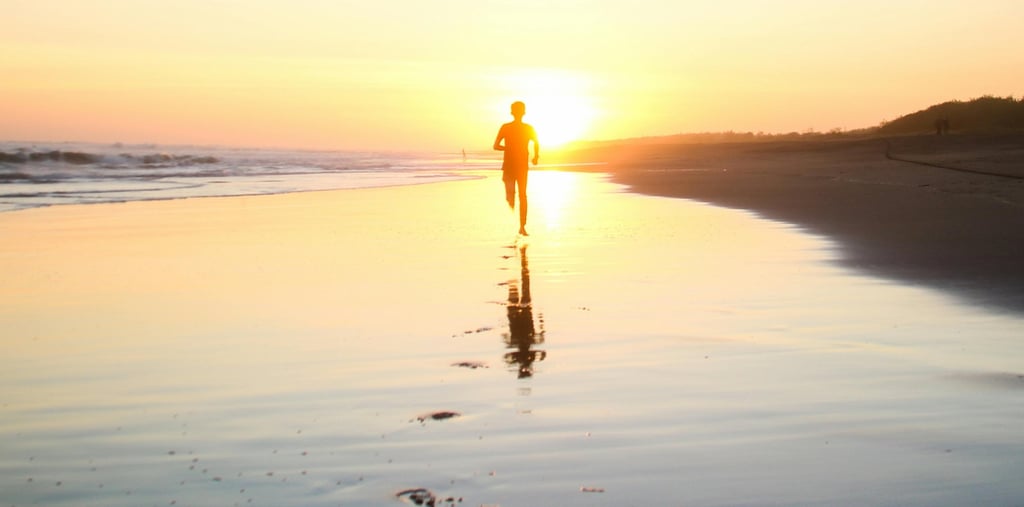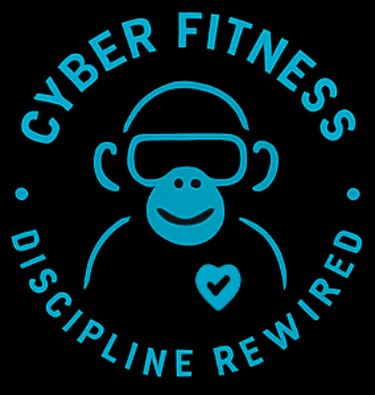Walking and running.
Discover the joy of walking and running - nature, progress, community, and confidence. Start small, build up, and watch your world expand one step at a time.
BODY


There’s something beautifully primitive about deciding to move your body through the world under your own steam. Walking, jogging, running fast - whatever form it takes - it’s one of the last honest things we do. No subscriptions, no shiny equipment, no monthly fees. Just your feet, the ground, and whatever stubbornness you’ve got left in the tank. Don’t get me wrong, as with anything, it’s as expensive as you want to make it – and race fees and fancy footwear can start to necessitate a second income. But it doesn’t have to cost the earth. Just start small. You go for a walk and suddenly you’ve done more for your physical and mental health than any “I’ll start on Monday” promise ever delivered.
Everyone says they’re “not a runner.” It’s always the same line, usually said with some kind of disgust. But the truth is kinder: if you can walk, you can eventually run. Maybe not fast, maybe not gracefully, maybe not without feeling like a washing machine full of bricks. But running doesn’t require perfection. It requires willingness. And willingness is something anyone can build.
When you start walking regularly, you start seeing your world with new eyes. You notice the trees on the corner you’ve driven past a thousand times. You discover side streets, little parks, weird shortcuts behind shops, graffiti, dogs, early-morning tradies, the whole ecosystem of your neighbourhood that you’ve been too busy to notice. And running unlocks even more. Every extra kilometre expands your personal map. You start recognising repeat characters like it’s your own suburban TV show. And when should you step onto a trail - bush, dirt, roots, rocks - your senses basically reboot. It’s addictive. You go from “I should exercise” to “I wonder what’s around the next bend” without even noticing the transformation.
Christopher McDougall spells this out in Born to Run. We’re designed for endurance, built from the bones up for persistence, long distances, curiosity, and movement. That’s why kids naturally run – their short chaotic bursts of joy - and why adults eventually crave it again once they peel off the layers of stress and self-doubt.
Road running and trail running are two different beasts, both worth exploring. Road running is predictable. You know the terrain, you can check your watch, keep a rhythm, focus on pace. It’s reliable and structured and brilliant when you’re training for an event where you want to see improvements clearly. Trails are freedom. Trails force you to watch your footing, adjust your stride, switch on the parts of your brain that have been sleeping. Trails are fun in a messy, primal way. You don’t run for pace on trails; you run for the feeling. And there’s nothing quite like the moment you crest a hill, sweaty and broken, and get hit with a view you didn’t even know existed ten minutes from your house. Trails reward you with the hidden world behind the world.
Once you decide to build a routine, simplicity wins. A walk-run method is still king. Something like one minute jogging, two minutes walking, repeated until your legs or patience give out. That’s how 90% of normal humans become runners. There’s this strange, almost sacred meditative effect that shows up once you’ve been running long enough for the noise in your head to burn off. At first your brain is a mess - lists, worries, the dumb thing you said last week, what you’re cooking for dinner, that random argument you rehearsed in your mind for no reason. But somewhere around the 20 minute mark, something clicks. Your breathing finds a groove, your feet settle into a rhythm, and your thoughts soften. You stop thinking in sentences and start thinking in sensations. The world narrows to the sound of your footsteps, the rush of air, the gentle thud of your heart. It’s the closest most of us come to meditation without sitting cross-legged and pretending we’re enlightened. Running becomes a moving reset button. Problems shrink, ideas appear out of nowhere, and you finish feeling like you’ve rinsed your mind under running water.
When you bring a bit of structure in - especially if you’re leaning toward training for an event - it helps to track your runs. You don’t need a fancy watch. A cheap GPS watch absolutely does the job. I use a Suunto, but there’s also Garmin and a bunch of others. All you need is distance, time, and pace. Pair that with the Strava app and you’re set. Strava turns your effort into a story. A record. Now you can race you vs you. While you’re sorting gear out, grab a FlipBelt (or similar). It’s one of those things you don’t realise you need until you use it once and wonder how you ever lived without it. Your phone, keys, food, whatever - you stuff it in and nothing moves. No bouncing, no jangling, no stabbing your thigh every fifty metres. It just works. And when something “just works” in running, you hang onto it for dear life. Again, there are other brands, but this one works for me.
As your runs stretch longer, audio becomes your secret weapon. On slow, comfortable days, audiobooks and podcasts are gold. They pull your mind into the story and your body just follows along. You forget the discomfort – wanting to go further as the book progresses. On fast days - short races, parkrun efforts, hill repeats - you go full chaos mode with fast, high-energy music. The type of music that makes you unconsciously speed up. And speaking of parkrun - it’s one of the greatest tools for building confidence. Free 5k runs, every Saturday, everywhere. People of all ages, shapes, and levels show up. No pressure, no judgment. You jog or walk it, get a time, get a coffee, get a dopamine hit of community. It’s hard not to feel accomplished afterwards.
For events, pick something that scares you a little. A distance that makes you think, “Maybe… but maybe not.” That tension is the sweet spot. Fun runs, charity 10kms, half marathons, marathons, even ultras if you enjoy flirting with insanity. The moment you sign up, your mindset shifts. Suddenly your walk becomes part of training. Your easy jog becomes a step toward something. Your identity changes from “someone who’d like to run” to “someone who is running toward something.” That subtle shift is huge. And you can build that momentum. If you can run 1km, you can run 2km. There’s not much difference between a 5km and a 10km. If you can run 10km, why not try a half. If you can embrace the struggle of a half marathon, go for a full. Ultramarathon distances start at 50km - if your training has brought you all the way to 42.2km, then why not tick all the boxes and go the 8km further next time.
On the science side, variety matters. The Science of Running by Steve Magness digs deep into how training stress, recovery, and pacing all interact. It’s technical but brilliant, and it gives you perspective: you don’t have to smash yourself every day to get better. In fact, most improvement happens in the boring, easy miles. And there’s a solid article from Runner’s World about the mental benefits of running - how it improves focus, reduces rumination, and builds discipline in a way few other exercises manage. Another great piece from Outside Online discusses how trail running specifically enhances mood and emotional regulation, thanks to the combination of movement, nature, and varied terrain. These aren’t hollow claims; they’re studied, observed, and experienced by almost everyone who sticks with it.
The truth is simple. Walking or running isn’t about being good. It’s about feeling good. It’s about the way your lungs settle into a rhythm. The way your brain quiets down. The way your problems shrink as your world expands. The way you come home sweaty, tired, and proud. Your head hits the pillow differently on days you’ve moved your body.
You don’t have to run marathons. You don’t even have to run fast. You just have to move. Let the movement take you wherever it takes you. One day you’ll look back at the version of you who was scared to start and you’ll barely recognise them.
Where to start?
Lace up, walk out your front door, and give yourself ten minutes. Walk fast for five. Jog gently for thirty seconds. Walk again. Repeat. That’s enough. That’s the doorway. Do it three times a week. Track it on Strava and use your previous time as competition - feel the tiny spark of pride when you see the lines on your map, and let that momentum grow. You don’t need perfect shoes or a runner’s body - you just need motion. Set a small goal, sign up for something that scares you a little, and let those quiet victories rebuild your confidence from the ground up. Your future self will thank you for taking this first step.


